HOME & Kitchen
The Best Over-the-Counter Hearing Aids and Other Hearing Solutions

For those with mild to moderate hearing loss, over-the-counter hearing aids offer a more affordable and accessible option than prescription models. These devices use telehealth, app-based tests, and advanced earbud technology to provide customizable hearing support at lower costs and with less hassle.
To help navigate the overwhelming choices, we spent two years researching and testing a range of options—from budget-friendly sound amplifiers to premium hearing aids sold online. Since hearing aids aren’t one-size-fits-all, we focused on different needs, preferences, and budgets to empower you to make an informed choice.
Menu
Who this is for
Over-the-counter (OTC) hearing aids are ideal for cognitively healthy adults with mild to moderate hearing loss who can provide clear feedback. They are not suitable for children, those with profound hearing loss, or individuals who require medical assistance in decision-making.
OTC devices appeal to those seeking a convenient, at-home alternative to audiologist visits, especially if transportation, time, or access to providers is an issue. Financial concerns also play a role—53% of HLAA survey respondents reported no insurance coverage for hearing aids, with costs for prescription models ranging from $1,000 to $14,000 per pair. In contrast, OTC aids average around $850, though premium options can reach $6,000.
For those wary of potential conflicts of interest in traditional hearing-aid sales and willing to experiment, OTC hearing aids offer an accessible and cost-effective solution.
How we picked

For this guide, we focused on over-the-counter hearing devices available online or through remote health-care platforms. These include PSAPs, hearables, and consumer-direct hearing aids, offering various levels of sound enhancement and priced between $95 and $6,500.
As with headphones, no single hearing aid suits everyone. Preferences like battery type, water resistance, and design (in-ear vs. over-ear) depend on individual lifestyles. However, our HLAA survey highlighted key features most users value:
- Generous trial period: 84% prioritized a trial period long enough to adjust to the device and make necessary changes.
- Customizable sound: 78% wanted tuning options with audiologist input, while 64% valued adjustability through apps or the seller.
- Multiple settings: 73% preferred preset modes for different environments, such as noisy restaurants or quiet spaces.
- Bluetooth compatibility: 69% desired connectivity with phones or laptops via Bluetooth.
No single hearing device is both affordable and packed with every key feature. For instance, telecoil capabilities—useful for connecting to local audio systems—are rare in OTC devices, with only one we tested offering this feature.
Technology also has trade-offs; smaller devices often struggle with Bluetooth connectivity. To address diverse needs, we tested a range of devices across different price points. After researching top-rated options, we evaluated 16 devices in our first round of testing and added 11 more in the second round. This helped us explore what benefits, if any, come with higher costs.
How we tested over-the-counter hearing aids
Our testing involved both objective measurements and subjective evaluations, spanning several months per round. Objective tests assessed each device’s maximum gain (amplification) and frequency response (which sound frequencies were boosted and by how much across different modes).
Surprisingly, there’s no FDA oversight for hearing-augmentation devices, including prescription aids. The industry relies on self-regulation, with doctors and users reporting issues. Given the risks of excessive volume, we checked whether devices complied with ANSI gain standards.
All devices enhanced frequencies critical for language comprehension (around 2–3 kHz), but the specific frequency boosts varied. Panelists’ preferences were influenced more by features like hearing test quality, microphone directionality, and fine-tuning adaptability than by frequency response.
For subjective testing, we used paid testers with diverse hearing abilities, dexterity, and tech experience to ensure broad applicability. Devices favored by this varied group were likely to suit more users.
Here’s a snapshot of our diverse panelists:
- Dan K. (50s): Avid biker, father of two young kids.
- Kathy M. (70s): Socially active grandmother and part-time caregiver.
- Fiona R. (20s): Newlywed, recent master’s graduate, full-time worker.
- Tom E. (60s): Pilates enthusiast with a partner and two dogs.
- Megan M. (40s): Remote worker, mom, and regular jogger.
- Young H. (60s): Active church member and pipe organ player.
Each tester used the devices for months, spending about a week on each to evaluate usability, sound quality, and adjustability. Frustrating designs (e.g., tiny buttons or charging issues) were quickly disqualified, while well-designed models received extended trials.
Panelists participated in every aspect of the process, from remote audiology appointments to testing apps, making calls, and integrating the devices into daily life—whether at Pilates, work, or even a wedding!
They provided detailed feedback, ranking favorites and identifying which device they’d personally buy. While I facilitated the process and analyzed their findings, I didn’t test the devices myself, as they’re designed for those with hearing loss.
Best if you’re new to hearing aids: Jabra Enhance Select 300
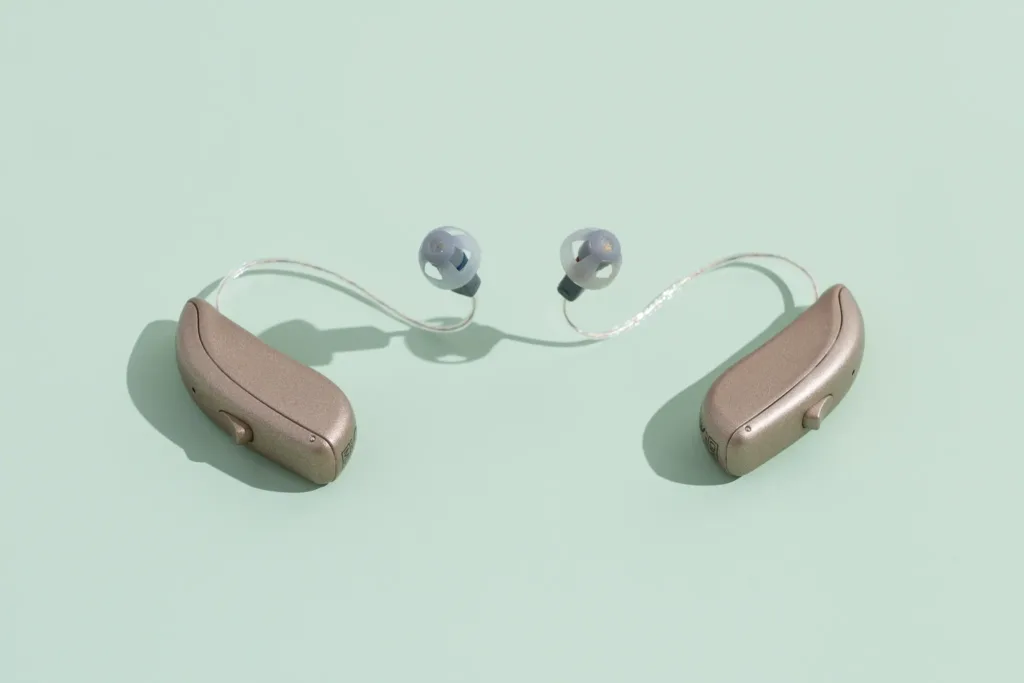
Who it’s for: Ideal for first-time hearing-aid users and those seeking earbud-like features.
Why it’s great: The Jabra Enhance Select 300 offers an affordable, feature-packed option with excellent customer service and a long trial period, making it a great starting point for new users.
Our panelists found it easy to set up, customize, and use. Its situational sound modes, like restaurant and outdoor settings, effectively reduce background noise while amplifying conversation—something cheaper devices struggled with. The behind-the-ear design is comfortable, IP68-rated for water and dust resistance, and works well with glasses.
The 300 supports Bluetooth audio playback and can transmit your voice for full headset functionality, unlike some OTC hearing aids. It includes adjustable wire lengths and dome sizes, tailored with guidance from Jabra’s audiologists.
We recommend the Premium package, which includes a video orientation, three years of follow-up care, adjustments, and warranty protection. While the Basic package is $200 cheaper, the added support and protection of the Premium plan are worth the investment.
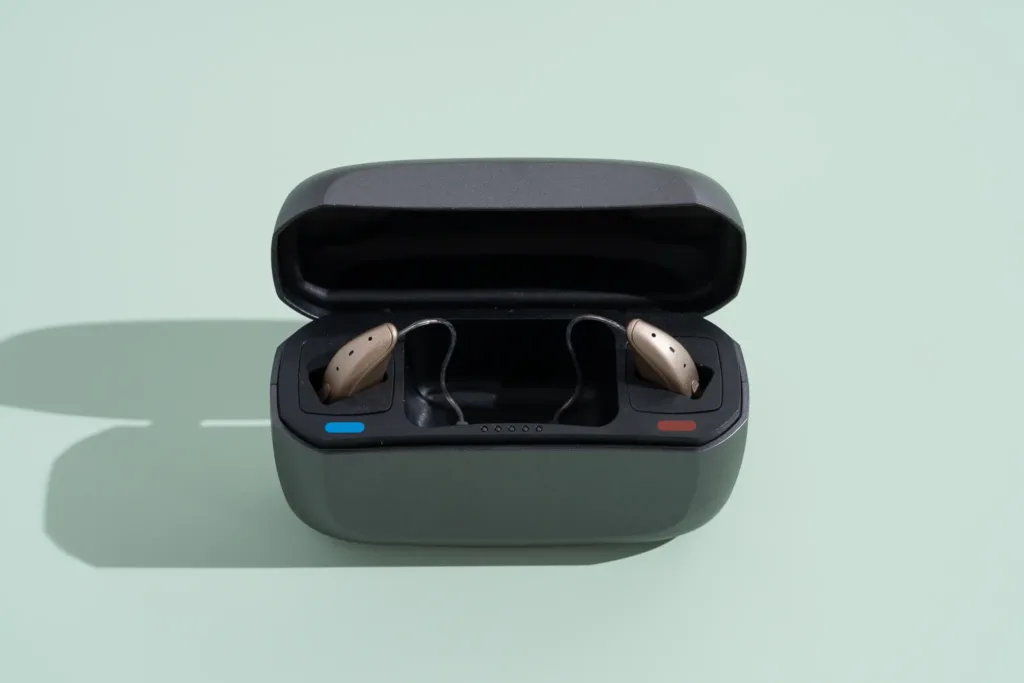
If you order directly from Jabra, the Enhance Select 300 hearing aids are preset based on an online hearing test. For retail purchases, you’ll need to complete the test at home. With the Premium package, Jabra’s professionals can fine-tune the sound during remote appointments, or you can adjust it easily via the app, with updates wirelessly synced to the devices.
Panelists found the app intuitive, allowing them to tweak volume, sound balance, and modes with just a few taps. Customer service was excellent, guiding users through setup and mobile-specific settings. The 300 amplifies voices well, with advanced noise reduction over the previous model, though daily differences may depend on individual hearing needs.
Comfort and fit impressed testers like Fiona, who appreciated the material and dome options for her small ear canals, and Megan, who noted the design was comfortable with glasses and nearly invisible. Tom, while satisfied with the fit, found the delicate wire harder to handle compared to more rigid sound tubes, which may pose challenges for those with dexterity issues.

The Jabra Enhance Select 300 uses rechargeable batteries, providing a full day’s use on a single charge. Panelists appreciated the in-case charging, which adds convenience for topping up on the go. Jabra claims one hour of charging provides 15 hours of use, and testers found this accurate, though they rarely ran out of battery by day’s end.
The Premium package costs $1,695 (with payment plans) and includes three years of follow-up care, which panelists praised for its helpful tech support and audiologist access—ideal for long-term use or assisting less tech-savvy loved ones. The warranty lasts three years, with a $195 deductible for loss or major damage, still cheaper than replacing the devices.
The Basic package, at $1,495, offers a shorter warranty and no support services.
Flaws but not dealbreakers
The Jabra Enhance Select 300 has some limitations. It requires a smartphone for sound adjustments, situational modes, and firmware updates, which may deter budget-conscious or anti-smartphone users—consider the less app-dependent Tweak Enhance instead.
Bluetooth setup can be finicky, as each hearing aid must connect separately. Removing both aids from the charging case simultaneously helps avoid pairing issues. Compatibility for videoconferencing is limited to MFi devices, excluding older Apple and Windows systems.
Music streaming lacks strong bass, which disappointed panelists. The charging case is bulky, though manageable since the aids last a full day on one charge. For a smaller case, consider the Eargo 6 or Sony CRE-C10.
Additionally, adjustments must go through Jabra’s system, not a personal audiologist. None of the OTC devices we tested, including the 300, have telecoil capabilities—a feature we hope to see in future models.
Best for those who dislike behind-the-ear hearing aids: Eargo 7


Eargo 7
A glasses-friendly option for active people
These tiny hearing aids sit entirely inside the ears, making them nearly invisible and comfortable with glasses. However, they don’t support streaming calls or music.
Who it’s for: The Eargo 7 is ideal for those who prefer discreet hearing aids and lead active lifestyles.
Why it’s great: The Eargo 7 sits fully inside the ear, making it nearly invisible and perfect for those who dislike traditional behind-the-ear designs. It offers situational sound profiles and improved background noise reduction for better speech clarity. With an IPX7 waterproof rating, it’s sweatproof and durable for physical activities.
However, Bluetooth is limited to adjusting settings—there’s no music or call streaming. You can upload your audiogram for a personalized fit, or take a hearing test through the app. Eargo offers lifetime support, including unlimited adjustments and professional guidance.
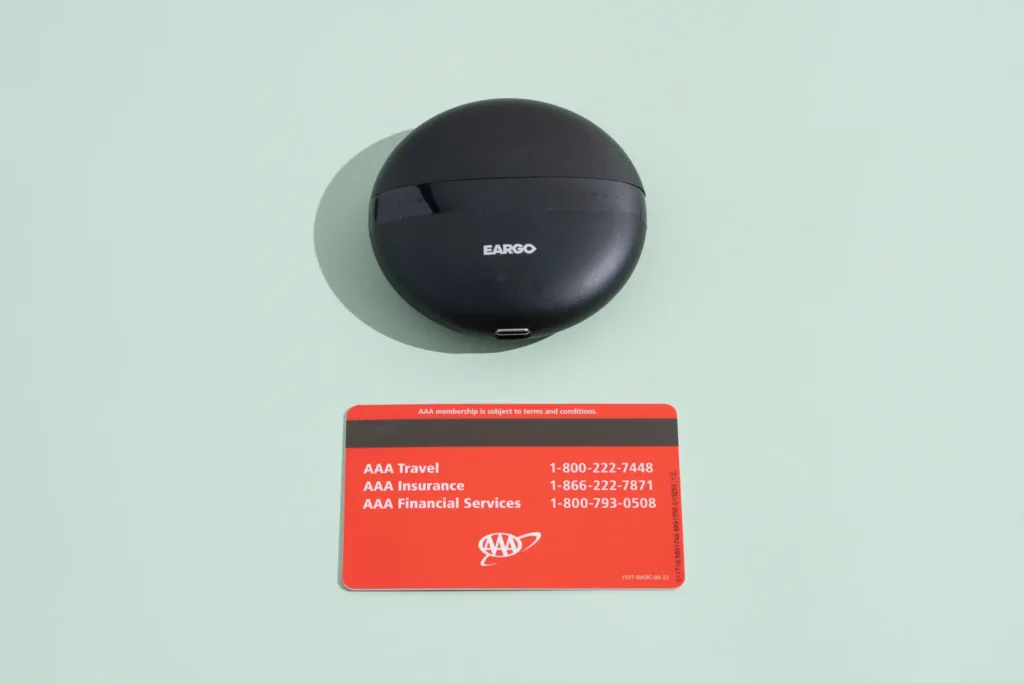
If behind-the-ear hearing aids amplify every hair movement or glasses adjustment, the Eargo 7 is worth considering. Its compact, multivitamin-sized design with soft silicone petals fits securely in the ear canal, reducing noise from hair or glasses. Unlike other in-ear aids, it lets natural sound in while enhancing specific frequencies based on your hearing needs. It also allows better airflow and reduces feedback, so users can use phones and wear headphones without issue—features not often found in other hearing aids.
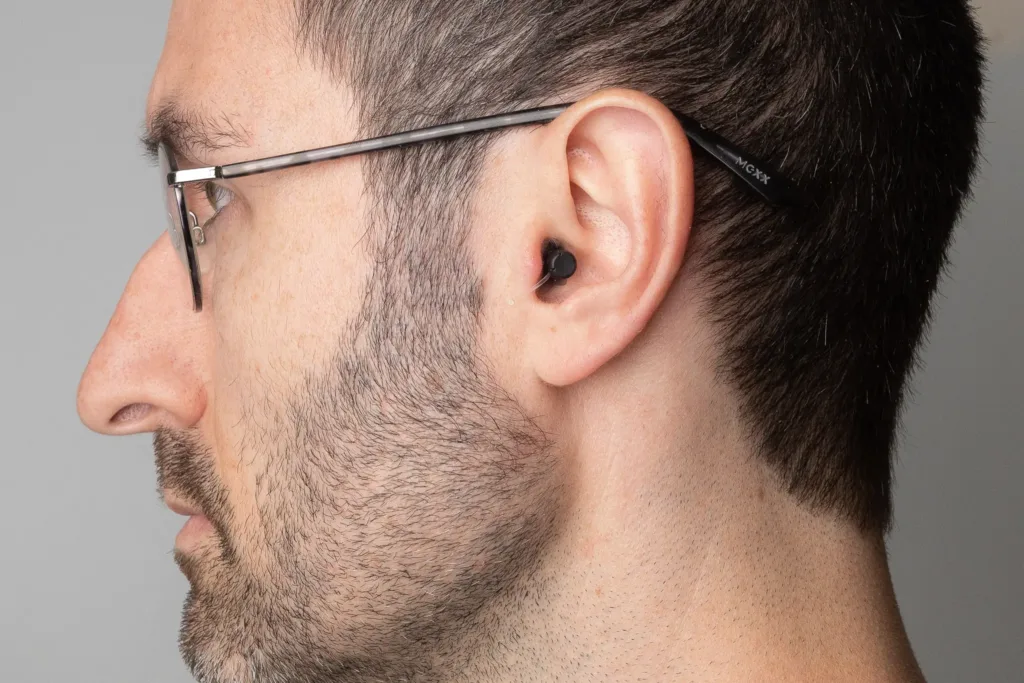
Kathy, who tested the original Eargo 6, appreciated how the Eargo 7 reduced wind noise and provided clear speech at family gatherings. The Eargo 7 uses rechargeable batteries with a 16-hour life, and its sleek, portable charging case provides an extra two days of power. The app allows easy sound adjustments and sends maintenance reminders. It has a 45-day return policy and a two-year warranty, plus a one-year limited warranty for loss or damage with a deductible. Priced at $2,290, the Eargo 7 is on the higher end but remains a top choice for many testers.
Flaws but not dealbreakers
The Eargo 7 has some drawbacks, including the need for a mobile device to adjust settings, which may not be ideal for budget-conscious or non-smartphone users. The app also lacks a visual indicator for volume settings, making it hard to track changes over time. While it accepts audiogram data for fitting, adjustments must be made through Eargo’s system, not by a personal audiologist. Additionally, it lacks telecoil capabilities. Those sensitive to in-ear devices may find it uncomfortable, as Megan preferred the behind-the-ear Jabra models.
Best PSAP for occasional hearing augmentation or single-ear use: Tweak Enhance
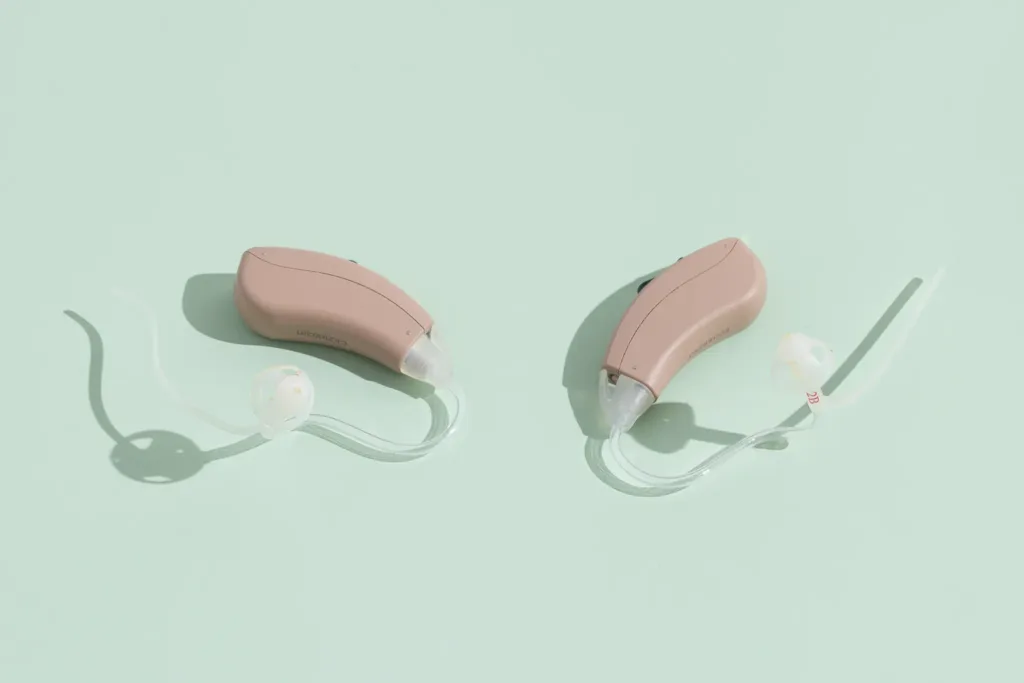
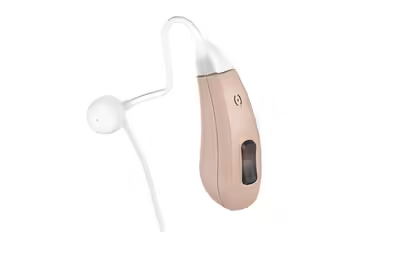
Tweak Enhance
A simple, affordable PSAP
This personal sound amplification device isn’t as lightweight or feature-rich as our hearing aid picks, but it effectively amplifies sound and only requires a smartphone app for initial setup.
Who it’s for: This model is ideal for budget-conscious individuals, those with limited smartphone access, and anyone needing hearing amplification for one ear or occasional use.
Why it’s great: The Tweak Enhance is classified as a personal sound amplification product (PSAP), but its design and functionality resemble traditional behind-the-ear hearing aids.
It stands out among similarly priced PSAPs, as it offers precise amplification and situational sound settings. The app allows for useful customization, and it’s one of the few PSAPs that can be used for single-ear hearing. Priced at $350 for one or $700 for a pair, it’s an affordable option.
Though initial setup requires a smartphone app, day-to-day adjustments can be made directly on the device, making it a convenient choice for those who prefer not to rely on a phone for hearing amplification.
The behind-the-ear design is slim and lightweight, with a sound tube and dome that fits comfortably in the ear canal. The device ships with two pairs of sound tubes and different dome sizes for a customizable fit. The large switches make it easy to use, even for those with dexterity issues, and it’s comfortable to wear with glasses.

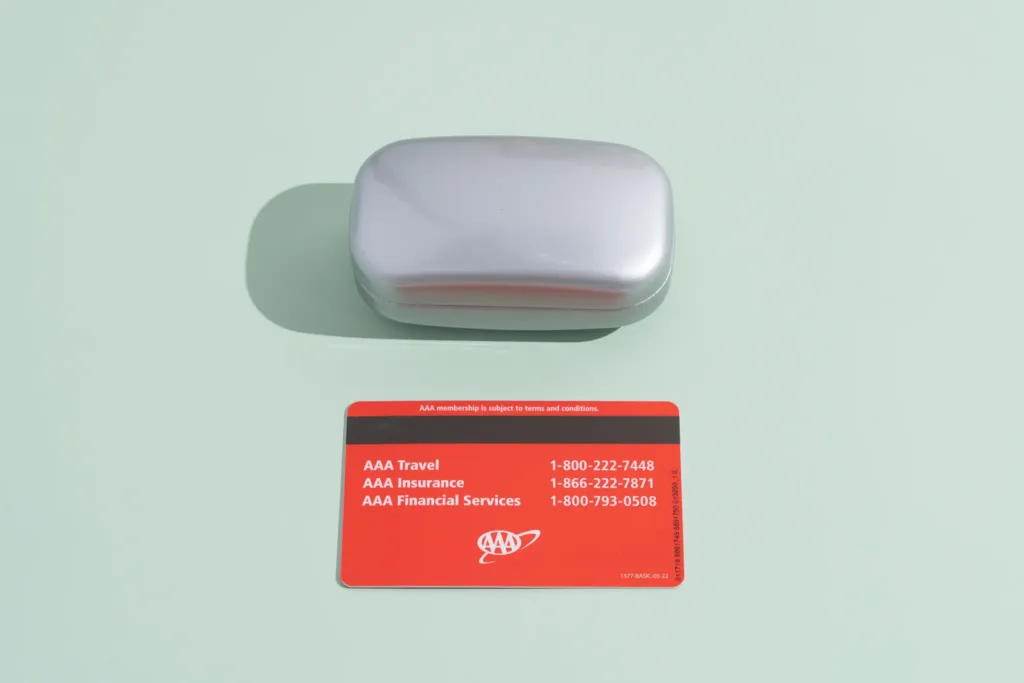
This device doesn’t include a built-in hearing test, nor does it offer the assistance of a hearing specialist during setup, as our hearing aid picks do. However, our panelists found the included instruction booklet to be clear and easy to follow, which is a step up from other less-expensive PSAPs.
The Enhance allows you to adjust frequency-specific amplification in two ways via the app: by using virtual sliders for specific frequencies or by inputting your audiogram. Panelists preferred using the audiogram, as it reduced guesswork.
One panelist, Tom, who owns expensive prescription hearing aids, was impressed, saying, “I’d take these over my old ones any day.” While Tom would choose a more advanced model for daily use, he and other testers agreed the Enhance is an excellent option for those needing occasional or less tech-heavy hearing help.
Our panel was surprised by the sound quality of such an affordable device. Tom found the speech clarity and musical representation comparable to the Eargo 7. The Enhance also outperformed other budget models in sound directionality and situational presets, which were helpful in both quiet and busy environments, unlike some cheaper devices that produced muffled or overly loud sounds.
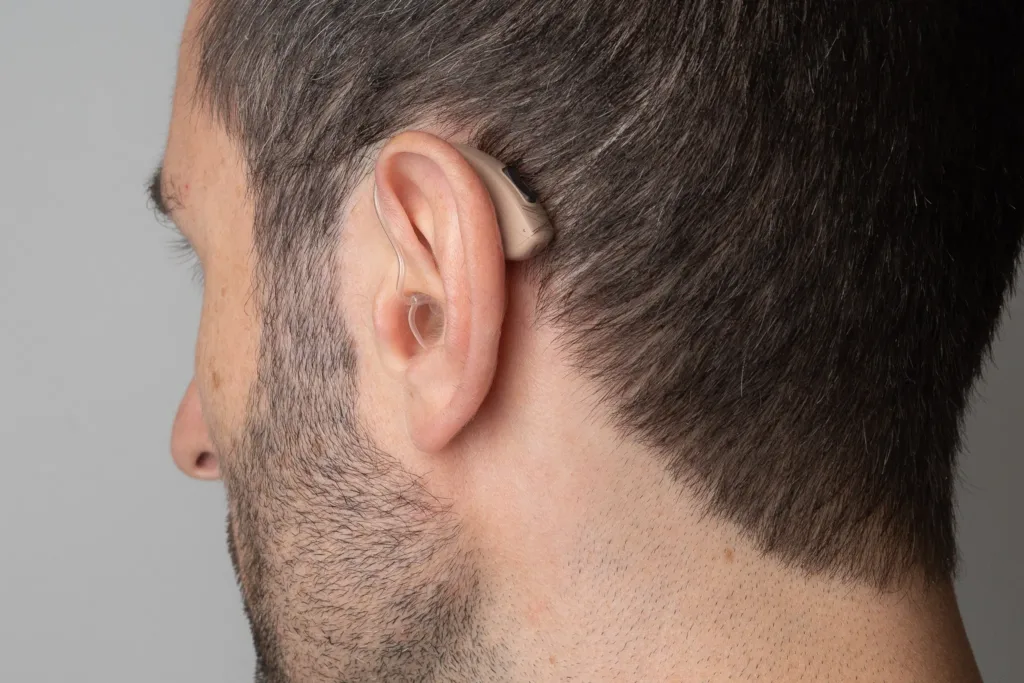
The Enhance uses a rechargeable battery, with Tweak listing the battery life at 20 hours. However, factors like volume, Bluetooth use, and other settings may affect battery performance. Our panelists had no trouble getting a full day of use from a single charge. The Enhance charges in a compact dock, small enough to fit on a bedside table. A pocket-sized carrying case, slightly smaller than a tin of Altoids, is included for portability, but it doesn’t charge the device.
Tweak offers a 30-day return policy, so be sure to use the Enhance regularly to fully assess the sound. The standard warranty is six months, but you can extend it to 12 months for an additional $75 per ear or $150 for both. The extended warranty also covers one replacement of a lost or damaged device at a discounted rate of $200 per ear for two years.
Flaws but not dealbreakers
The Tweak Enhance is designed solely for amplifying sounds around you, so it can’t stream music or calls. For some users, this may be acceptable or even preferred.
We were disappointed that the Tweak Enhance isn’t water-resistant. While we hoped to recommend an affordable device with at least splash resistance, none of the models we tested under $1,000 delivered the sound quality our panel desired. Ultimately, we prioritized sound quality over water resistance.
We also wish the Enhance offered a hearing-test-based setup. While the app allows users to upload an audiogram, not everyone has access to hearing professionals. This lack of guidance could result in improper amplification settings, but we encourage users to seek professional help to ensure the device works effectively.
The 30-day return policy and short warranty are less than ideal, especially considering the price. While it’s not as expensive as some advanced devices, we’ve seen better warranties on less costly products. However, Tweak’s customer service stood out, giving us confidence that they’ll provide support and repairs when needed.
